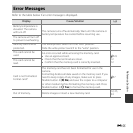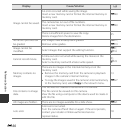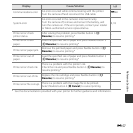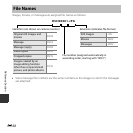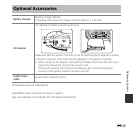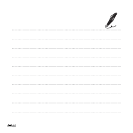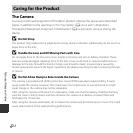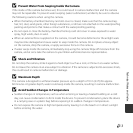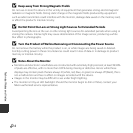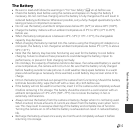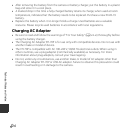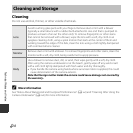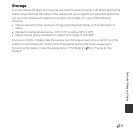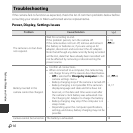
F3
Technical Notes and Index
B Prevent Water From Seeping Inside the Camera
If the inside of the camera becomes wet, this could result in camera malfunction and the camera
may not be repairable. To prevent water seeping (water submersion) accidents, be sure to observe
the following cautions when using the camera.
• When the battery-chamber/memory card slot cover is closed, make sure that the camera strap,
hair, lint, dust, sand grains, other foreign substances, or dirt are not attached on the waterproofing
packing and portions that make a contact with the waterproofing packing.
• Do not open or close the battery-chamber/memory card slot cover in areas exposed to water
spray, high winds, dust or sand.
• When an external force is applied on the camera, it could become deformed or the airtight seals
may become damaged and cause water to seep inside the camera. Do not place a heavy object
on the camera, drop the camera, or apply excessive force on the camera.
• If water seeps inside the camera, immediately stop using the camera. Wipe off moisture from the
camera, and at once take the camera to your Nikon-authorized service representative.
B Shock and Vibration
Do not drop the camera, strike it against a hard object such as a rock, or throw it at a water surface.
Do not leave the camera in an area subject to vibration. If the camera is subjected to excessive shock,
this could result in camera malfunction or damage.
B Maximum Depth
This camera is designed to withstand water pressure up to a depth of 10 m (33 ft) for approx.
60 minutes. At greater depth, water could seep inside the camera, resulting in camera malfunction.
B Avoid Sudden Changes in Temperature
• Sudden changes in temperature, such as when entering or leaving a heated building on a cold
day, can cause condensation to form inside the device. To prevent condensation, place the device
in a carrying case or a plastic bag before exposing it to sudden changes in temperature.
• Do not expose the camera to high temperatures by leaving it on the beach or in direct sunlight
before entering the water.



